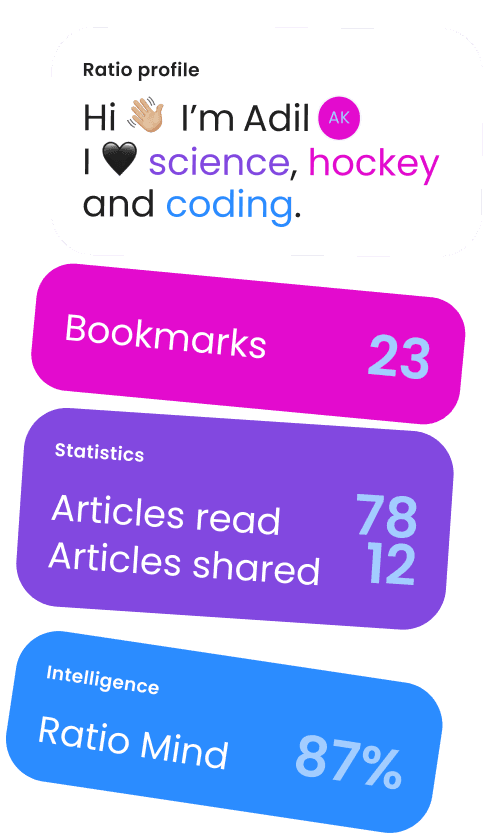The world’s first smart social network.
Only smart gets in. Ratio is where the curious, logical, and brilliant connect.
Social media for people who think — powered by science, AI, and reason.
While others scroll, we explore. While others argue, we reason.
AI-Simplified Science
Intelligence-Based Feed
Smart People
AI-Curated Discussions
FOR VERIFIED MINDS

Discover — Feed for the Curious
Your swipe finally has purpose.
Discover the most fascinating scientific ideas, discoveries, and breakthroughs — simplified by AI, visualized for clarity, and ranked by real curiosity, not clicks. Every post makes you think differently.
FOR VERIFIED MINDS

Discuss — Where Smart Minds Collide
No noise, no trolls — just intelligent conversation.
Engage in thoughtful discussions with scientists, students, and curious minds worldwide. AI keeps it civil, logical, and fact-based — so every comment actually adds value.
FOR VERIFIED MINDS

Build Your Knowledge Library
Your brain deserves better bookmarks.
Save your favorite discoveries, debates, and posts to your private library — a personal vault of insights you can revisit, organize, and grow.
FOR VERIFIED MINDS

Show Your Mind, Not Just Your Face
Your intelligence is your identity.
Create a profile that reflects how you think: showcase your logic test score, areas of curiosity, and scientific interests. Pass the Logic Test to reveal your intelligence-based badge — the new blue check.
